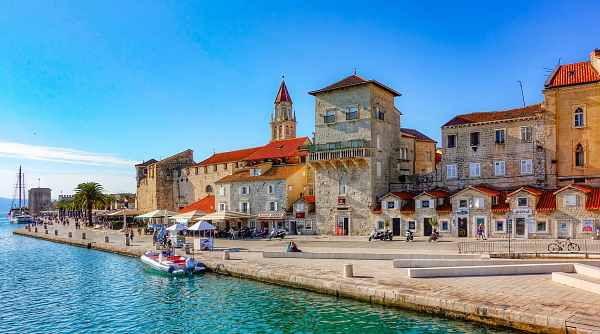Croatia is a gem on the Adriatic coast. It’s renowned for its stunning coastline and beautiful beaches, vibrant cities and culture, and historical sites like fortresses and castles. Add delectable wines and cuisine, and Croatia provides a rich and memorable experience for travelers. Here are our picks for the top 10 things to do in this country to help you plan your visit.
Explore Dubrovnik’s Old Town
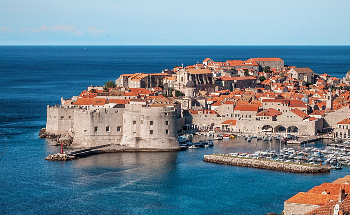 Dubrovnik, known as the “Pearl of the Adriatic,” is famous for its well-preserved medieval walls and historic streets. The Old Town, a UNESCO World Heritage Site, offers a journey through history with its Gothic, Renaissance, and Baroque churches, monasteries, and palaces.
Dubrovnik, known as the “Pearl of the Adriatic,” is famous for its well-preserved medieval walls and historic streets. The Old Town, a UNESCO World Heritage Site, offers a journey through history with its Gothic, Renaissance, and Baroque churches, monasteries, and palaces.
Visitors can walk along the city walls, enjoy stunning views of the Adriatic Sea, and explore the winding streets filled with cafes and shops.
Visit Plitvice Lakes National Park
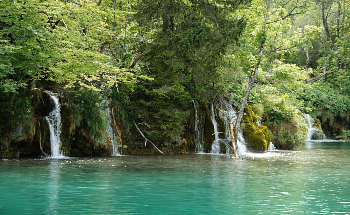 This UNESCO-listed park is known for its 16 terraced lakes and exquisite waterfalls, set in deep woodland populated with deer, bears, wolves, boars, and rare bird species. The park offers various walking trails and boat rides that allow visitors to explore its natural beauty.
This UNESCO-listed park is known for its 16 terraced lakes and exquisite waterfalls, set in deep woodland populated with deer, bears, wolves, boars, and rare bird species. The park offers various walking trails and boat rides that allow visitors to explore its natural beauty.
The vibrant colors of the lakes, ranging from azure to green, grey, or blue, change constantly depending on the minerals in the water and the angle of sunlight.
Explore the Forts and Castle Ruins
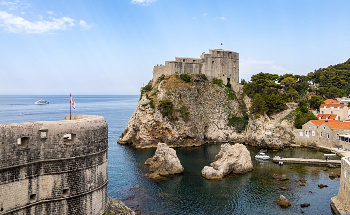 Croatia is a treasure trove of historic sites, with an array of captivating forts and castle ruins. In Dubrovnik, Fort Lovrijenac is set on a towering cliff with views of the Adriatic Sea and the city’s ancient walls. Nearby, the medieval walls of Dubrovnik itself are a must-see, with their rich history and scenic vistas. Further north in Rijeka, Trsat Castle sits on a hill, providing visitors with sweeping views of Kvarner Bay. Near Split, the Klis Fortress stands as a sentinel on rugged terrain and offers a unique view of the Dalmatian landscape. Perched on a hill in Šibenik, St. Michael’s Fortress showcases panoramic views of the city and the sea. Overlooking Hvar Island, Tvrđava Fortica stands out for its breathtaking views of the Adriatic and the Pakleni Islands. Each of these sites allows tourists to step back in time and explore the historical architecture.
Croatia is a treasure trove of historic sites, with an array of captivating forts and castle ruins. In Dubrovnik, Fort Lovrijenac is set on a towering cliff with views of the Adriatic Sea and the city’s ancient walls. Nearby, the medieval walls of Dubrovnik itself are a must-see, with their rich history and scenic vistas. Further north in Rijeka, Trsat Castle sits on a hill, providing visitors with sweeping views of Kvarner Bay. Near Split, the Klis Fortress stands as a sentinel on rugged terrain and offers a unique view of the Dalmatian landscape. Perched on a hill in Šibenik, St. Michael’s Fortress showcases panoramic views of the city and the sea. Overlooking Hvar Island, Tvrđava Fortica stands out for its breathtaking views of the Adriatic and the Pakleni Islands. Each of these sites allows tourists to step back in time and explore the historical architecture.
Discover Diocletian’s Palace in Split
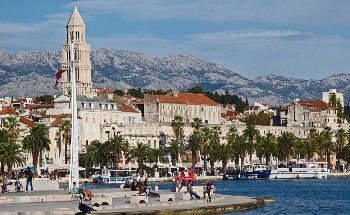 This ancient palace is one of the most significant and best-preserved Roman buildings in the world.
This ancient palace is one of the most significant and best-preserved Roman buildings in the world.
Built for Emperor Diocletian in the 4th century AD, it now forms about half the old town of Split.
Visitors can explore its ancient courtyards, temples, and cellars, as well as the bustling markets and cafes that now thrive within its walls.
Relax at Zlatni Rat Beach (Golden Horn)
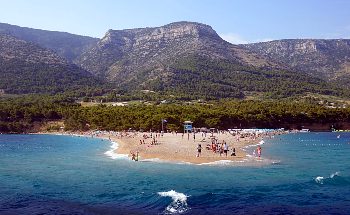 Zlatni Rat Beach, often referred to as the Golden Horn or Golden Cape is one of Croatia’s most stunning and unique beaches, located on the southern coast of the island of Brač. This iconic beach is famed for its distinctive, horn-like shape and ever-shifting pebble formations, caused by changes in tide, current, and wind. Situated near the charming town of Bol, Zlatni Rat offers breathtaking views of the Hvar Channel and the Cerulean Adriatic Sea.
Zlatni Rat Beach, often referred to as the Golden Horn or Golden Cape is one of Croatia’s most stunning and unique beaches, located on the southern coast of the island of Brač. This iconic beach is famed for its distinctive, horn-like shape and ever-shifting pebble formations, caused by changes in tide, current, and wind. Situated near the charming town of Bol, Zlatni Rat offers breathtaking views of the Hvar Channel and the Cerulean Adriatic Sea.
Visitors can indulge in various activities such as windsurfing, stand-up paddleboarding, and sunbathing on the smooth pebbles. The beach is surrounded by pine tree groves, which provide a refreshing escape from the sun.
Walk the Walls of Ston
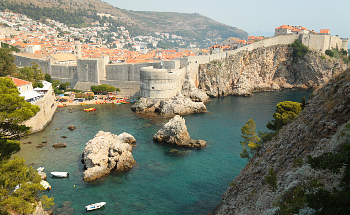 The Walls of Ston, a remarkable feat of medieval architecture, are located in the small town of Ston on the Pelješac Peninsula in Croatia. Often referred to as the “European Wall of China,” these walls were originally built in the 14th century to protect the valuable salt pans that contributed to the area’s wealth. Stretching over 5 kilometers, they are among the longest preserved fortification systems in Europe. The walls connect Ston with its smaller neighbor, Mali Ston, and feature impressive fortresses, towers, and gates along their length.
The Walls of Ston, a remarkable feat of medieval architecture, are located in the small town of Ston on the Pelješac Peninsula in Croatia. Often referred to as the “European Wall of China,” these walls were originally built in the 14th century to protect the valuable salt pans that contributed to the area’s wealth. Stretching over 5 kilometers, they are among the longest preserved fortification systems in Europe. The walls connect Ston with its smaller neighbor, Mali Ston, and feature impressive fortresses, towers, and gates along their length.
Visitors can walk along portions of these historic walls, enjoying panoramic views of the surrounding countryside, the Adriatic Sea, and the ancient salt pans still in use today.
Visit Krka National Park
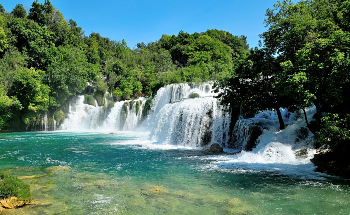 Similar to Plitvice but less crowded, Krka National Park, located near the town of Šibenik, is a natural wonder that offers a spectacular display of waterfalls and gorges. The park is renowned for its seven cascading waterfalls, with the most famous being Skradinski Buk, a massive, clear, natural pool with high waterfalls at one end.
Similar to Plitvice but less crowded, Krka National Park, located near the town of Šibenik, is a natural wonder that offers a spectacular display of waterfalls and gorges. The park is renowned for its seven cascading waterfalls, with the most famous being Skradinski Buk, a massive, clear, natural pool with high waterfalls at one end.
Visitors can enjoy walking along the wooden pathways and bridges that meander through the park’s landscape of rich flora and fauna, including numerous bird species. Additionally, Krka National Park offers the unique opportunity to swim in certain areas. Historical landmarks like ancient monasteries add a cultural dimension.
Experience Zagreb’s Culture and History
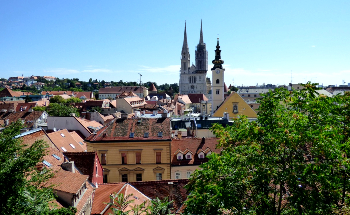 The capital city of Croatia boasts a rich tapestry of culture and history, dating back to Roman times. This is evident in its well-preserved historical architecture, ranging from medieval fortifications to Austro-Hungarian elegance. The heart of its cultural life beats in the Upper Town (Gornji Grad), home to the iconic St. Mark’s Church and the historic Ban Jelačić Square. Zagreb is also renowned for its museums, including the Museum of Broken Relationships and the Zagreb City Museum. Travelers will also find numerous theaters, art galleries, and annual events like the Zagreb Film Festival and the INmusic Festival. This blend of historical richness and contemporary cultural dynamism makes Zagreb a captivating destination
The capital city of Croatia boasts a rich tapestry of culture and history, dating back to Roman times. This is evident in its well-preserved historical architecture, ranging from medieval fortifications to Austro-Hungarian elegance. The heart of its cultural life beats in the Upper Town (Gornji Grad), home to the iconic St. Mark’s Church and the historic Ban Jelačić Square. Zagreb is also renowned for its museums, including the Museum of Broken Relationships and the Zagreb City Museum. Travelers will also find numerous theaters, art galleries, and annual events like the Zagreb Film Festival and the INmusic Festival. This blend of historical richness and contemporary cultural dynamism makes Zagreb a captivating destination
Sail the Croatian Islands
 Croatia’s Adriatic coast is dotted with over a thousand islands, each offering unique landscapes and cultural experiences. Islands like Hvar, known for its lavender fields and vibrant nightlife, or Korčula, reputedly the birthplace of Marco Polo and known for its well-preserved medieval town, are must-visits.
Croatia’s Adriatic coast is dotted with over a thousand islands, each offering unique landscapes and cultural experiences. Islands like Hvar, known for its lavender fields and vibrant nightlife, or Korčula, reputedly the birthplace of Marco Polo and known for its well-preserved medieval town, are must-visits.
Sailing trips can range from day excursions to week-long voyages.
Tour the Istrian Peninsula
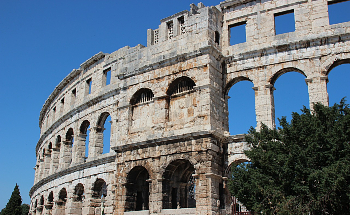 Known for its rolling hills, vineyards, and olive groves, Istria is often compared to Tuscany for its rustic charm and culinary delights, particularly truffles, fine wines, and olive oil. The coast is dotted with idyllic fishing villages and historic port towns like Rovinj and Pula, the latter of which is famous for its well-preserved Roman amphitheater.
Known for its rolling hills, vineyards, and olive groves, Istria is often compared to Tuscany for its rustic charm and culinary delights, particularly truffles, fine wines, and olive oil. The coast is dotted with idyllic fishing villages and historic port towns like Rovinj and Pula, the latter of which is famous for its well-preserved Roman amphitheater.
The region is also great for cycling and wine-tasting tours.
Photo Credits:
Lead – by Udo on Pixabay
Dubrovnik – Ivan Ivankovic from Pixabay
Plitvice – by Robert Mühlbacher from Pixabay
Fort Lovrijenac – by zrnozob from Pixabay
Diocletian Palace in Split – by adestuparu from Pixabay
Zlatni Rat Beach – by Dieter from Pixabay
Walls of Ston – by Salya T on Unsplash
Krka National Park – by Ivan Ivankovic from Pixabay
Zagreb – by Arvid Olson from Pixabay
Island Sailing – by 11756153 from Pixabay
Istrian Peninsula – Pula – Roman Amphitheater – by Monika Baechler from Pixabay


